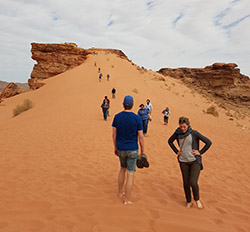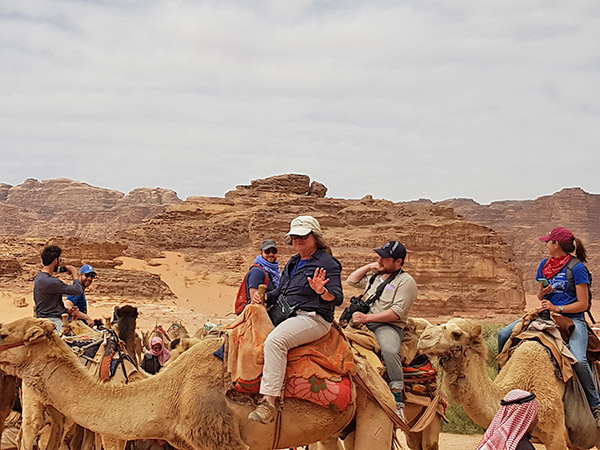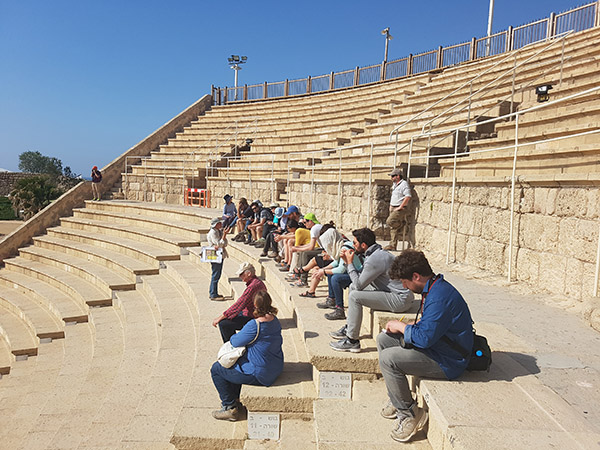In the Camel Tracks of Lawrence of Arabia

Camels are not the usual mode of transportation on American School trips. This spring, however, some twenty ASCSA members explored the Moon Valley desert, a.k.a. Wadi Rum, in Jordan from this advantageous viewpoint. The 2017 optional School trip to Israel and Jordan took us from the heights of Masada (admittedly by cable car) to the lowest point on earth at the Dead Sea. Premier archaeologist Dan Bahat led us through the tunnels of underground Jerusalem. In Jordan, we ventured from Umm Qais on the Syrian border to Aqaba on the Red Sea. We visited the vast Roman cities of Jerash and Caesarea and the tombs of Moses, Herod, Nabatean kings, and Jesus. Camping with Bedouins in the desert and admiring one of the largest Crusader castles in the Levant, at Karak, were unforgettable. We spent hours in two state-of-the-art archaeological museums: the Israel Museum in Jerusalem with its Dead Sea Scrolls, and the new Jordan Museum in Amman with its amazing Neolithic statues from Ain Ghazal. Dining on falafel, creamy hummus and a Near Eastern specialty, maqlubeh (‘upside-down’ rice with chicken) never got old. A highlight was the wonderful hospitality of our sister institutions, the Albright Institute of Archaeological Research in Jerusalem and the American Center of Oriental Research (ACOR) in Amman, under their directors Matt Adams and Barbara Porter. Lest one imagine that this trip lacked the usual rigor of ASCSA treks, one student clocked 31,405 steps on a single day! We are extremely grateful to ASCSA Mellon Professor Kevin Daly for organizing this incredible journey to the Holy Land in collaboration with the Albright, and hope that future students at the American School will continue to enjoy experiences as exceptional as this one.

Incoming Director Jenifer Neils (center) and students in Wadi Rum, Jordan

Students at Caesarea in Israel